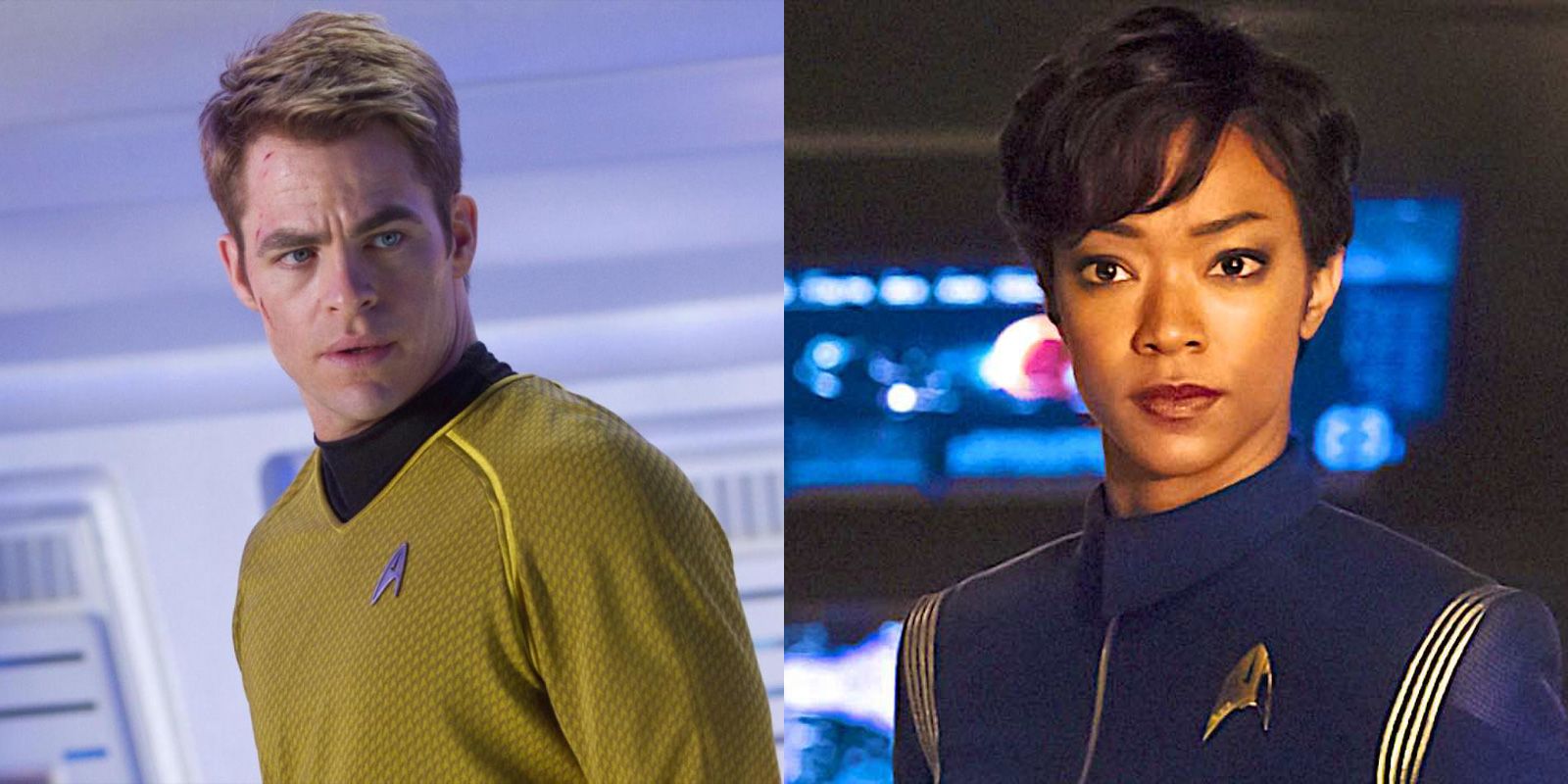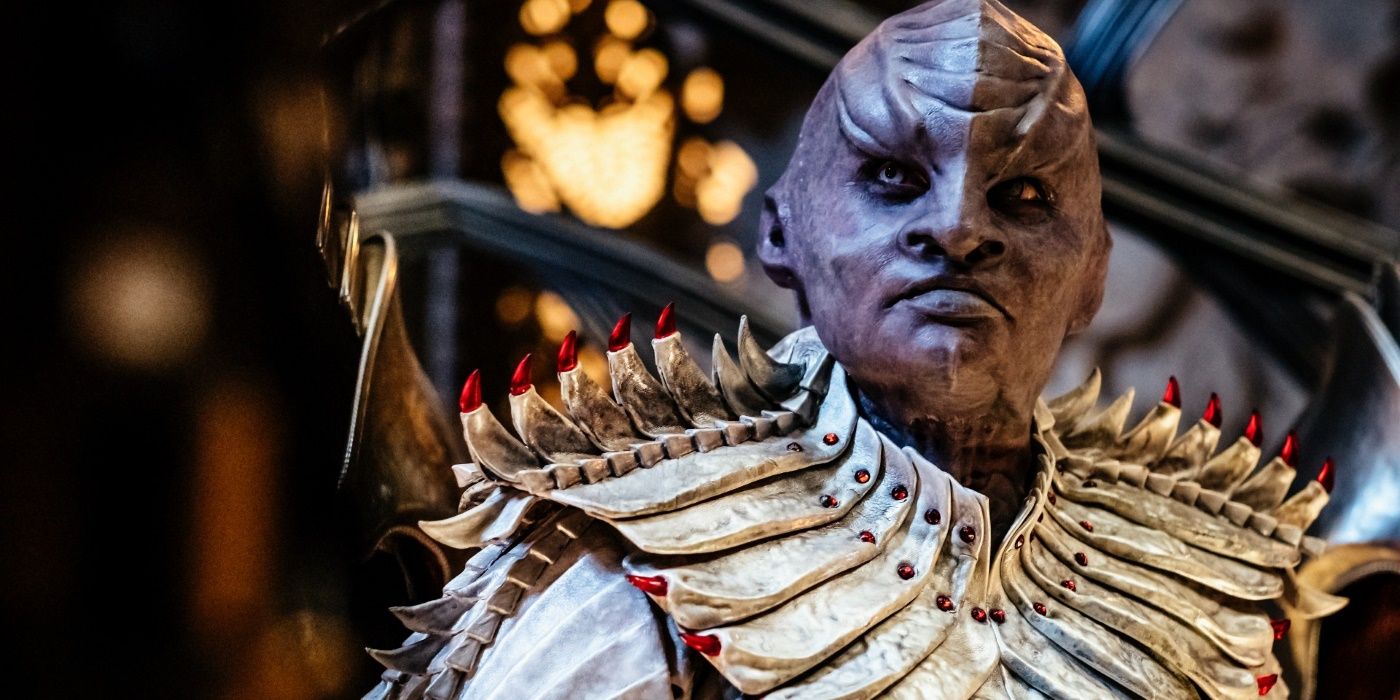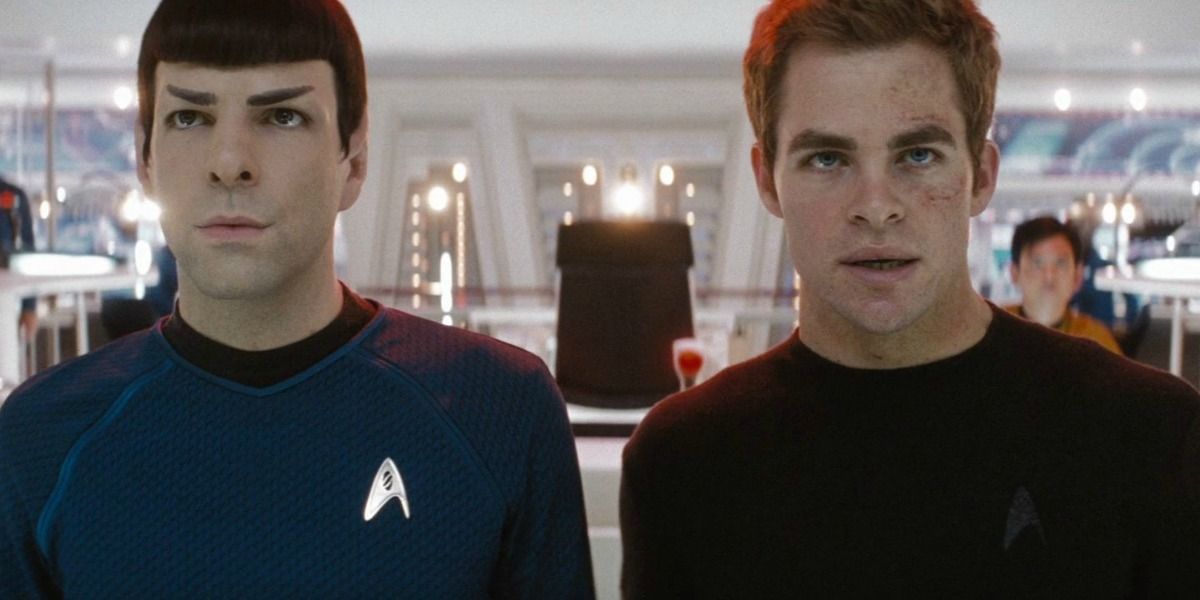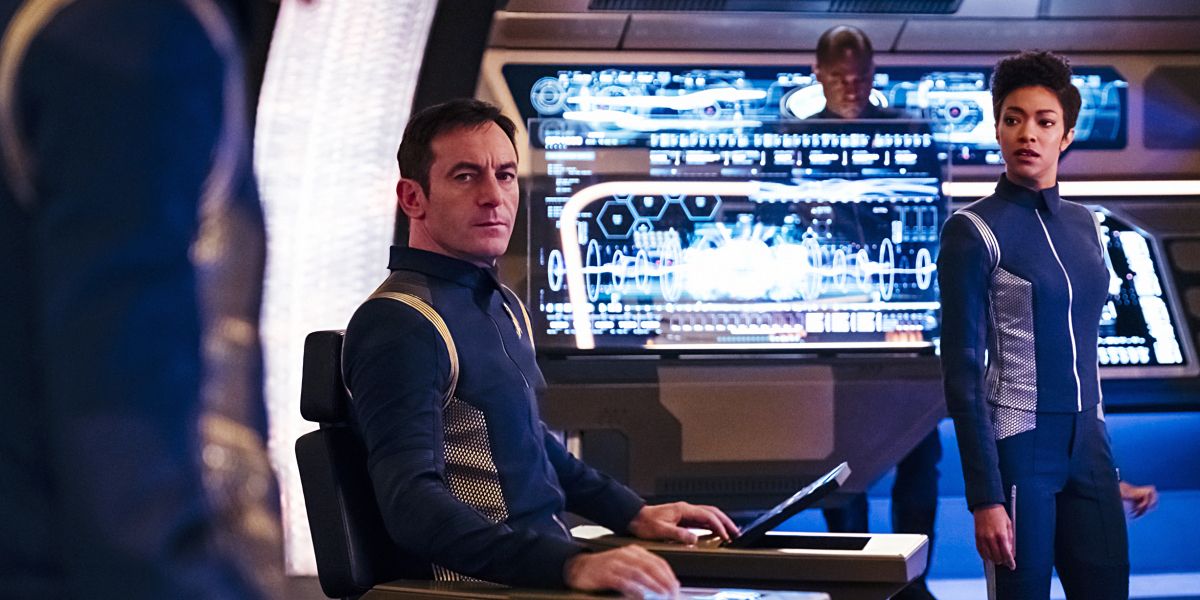Star Trek: Discovery is well into its first season, and has been enough of a success that it's been announced it will return for a second season on CBS All Access. The show itself has been divisive, with some fans reveling in the story of disgraced Starfleet officer Michael Burnham (Sonequa Martin-Green), while others have taken issue with the show's darker tone and the Discovery's morally ambiguous commanding officer, Captain Gabriel Lorca (Jason Isaacs). No matter where fans ultimately come down on the show, one thing is undeniable at this point - there's no real way Star Trek: Discovery can fit into the portion of Star Trek continuity it's supposed to.
A prequel series set a decade before the original Star Trek series, Discovery runs into several problems native to prequels at this point. The first, and most obvious, is that there's simply no way to reconcile the technology of Discovery with the technology of the original series. The practical reason for that is obvious; the original series was produced over 50 years ago, when painted plywood and matte paintings of space could credibly pass for a vision of the far future. Not only has Discovery made no effort to acknowledge this discrepancy, it's leaned into the problem, showcasing technology even more advanced than shows like The Next Generation and Deep Space Nine, which chronologically take place over a century after Discovery.
The aesthetic issues aren't limited to Starfleet, however. The version of the Klingons in Discovery in no way resemble the previous iterations of that warrior race. The Klingons did indeed endure a physical overhaul once before in the franchise's past, but that change was thoroughly explained in the prequel series Enterprise, making these new, deeply alien looking Klingons an even bigger anachronism.
There are narrative issues as well. Burnham has been retconned into a never-before-discussed adoptive sister of Spock, taken in by his father Sarek when her parents were killed and raised on Vulcan alongside the future first officer of the Enterprise. This is actually the second time Spock has had a retconned sibling, the first time being in the franchise nadir Star Trek V: The Final Frontier, when it was revealed he had a half-brother, Sybok, a religious lunatic with poorly explained healing powers. The fact that Burnham is the least embarrassing of Spock's retconned siblings is the definition of damning with faint praise.
And yet there's an easy, obvious out for Discovery that would solve nearly all of these problems - set the series in the Kelvin timeline.
A quick primer on the Kelvin timeline. Every previous Star Trek series, as well as every Star Trek movie through 2002's Star Trek: Nemesis, is set in what's now referred to as the Prime timeline. When J.J. Abrams relaunched the franchise in 2009 with the inventively titled Star Trek, he didn't actually reboot the series. At the beginning of that film, a group of rogue Romulans and an elderly Spock from the late 24th century are sucked into a black hole and emerge in the year 2233, where the Romulans arrive first and destroy a Federation starship - the USS Kelvin - killing Lieutenant George Kirk and fundamentally altering the life of his newborn son, James Kirk. This event creates an alternate timeline, referred to as the Kelvin timeline, which consists of the events chronicled in the three Star Trek films starring Chris Pine and Zachary Quinto.
The alternate timeline gave those films tremendous creative leeway to tell new stories with a younger version of pre-established characters without having to shoehorn them into established continuity. It also provided a decent in story excuse for the decidedly advanced production values compared to the original series: the Kelvin was able to scan the Romulans' advanced, late 24th century ship and retrofit much of its technology.
One of Star Trek: Discovery's original selling points was that it was the franchise's long anticipated return to the Prime timeline. But its litany of confounding decisions have negated whatever nostalgic value that promise held. Discovery, as well as the rest of Star Trek going forward, should exist in the Kelvin timeline.
This would resolve several issues almost immediately. From an aesthetic viewpoint, it's a pretty easy leap to see how Discovery's version of Starfleet could credibly exist a few years before the events of Abrams' first Star Trek film. Discovery's ships have borrowed the look of the Abrams films in many ways, even replicating the director's much-derided penchant for lens flair.
Perhaps more importantly, the alternate timeline would resolve most of the narrative issues that plague the show. While it strains credibility to insert a never before mentioned human sister into the Prime timeline's version of Spock, the combination of the "butterfly effect" aspect of the Kelvin timeline and our relatively thin knowledge of the Kelvin timeline Spock's early life would provide enough wiggle room for Burnham to have credibly existed.
The Klingons would still be a bit of a problem. The Kelvin timeline version of the Klingons is briefly glimpsed in Star Trek Into Darkness, where they appear as slightly updated versions of the race made famous in The Next Generation and Deep Space Nine, with human skin tones and pronounced forehead ridges. Even if the physical issues couldn't be completely resolved, the narrative ones mostly could; Into Darkness established very little about Klingon culture in the Kelvin timeline, and Discovery's religiously fanatical, animalistic take on the Klingons could more credibly fit into the alternate timeline than the original one.
There's another, even more practical reason to set Discovery in the Kelvin timeline; it's simply the version of Star Trek that the average viewer is most familiar with at this point. The Prime timeline consists of ten movies and over 700 episodes and, let's be honest, a lot of it either hasn't aged well or was never that great to begin with. Conversely, the Kelvin timeline currently consists of three big, popular movies. Expanding that world through Discovery makes much more sense than attempting to shoehorn it into a sprawlingly intimidating continuity that's been dormant for over a decade.
Star Trek has to make a choice. The only way to tell a creatively vital, ongoing story within the Prime timeline is to move past The Next Generation and Deep Space Nine into the 25th century, and there's every indication that the franchise's producers simply have no interest in doing that. If the franchise is adamant about loitering in its past, filling in the smallest of narrative gaps in an effort to lean on nostalgia, then it has to be in the Kelvin timeline. Ironically, Discovery has played so fast and loose with continuity that, even a handful of episodes into its first season, it can still easily be amended to a Kelvin timeline entity. It's not only the right choice for the story Discovery is trying to tell, but also for Star Trek's longterm health as a franchise.




